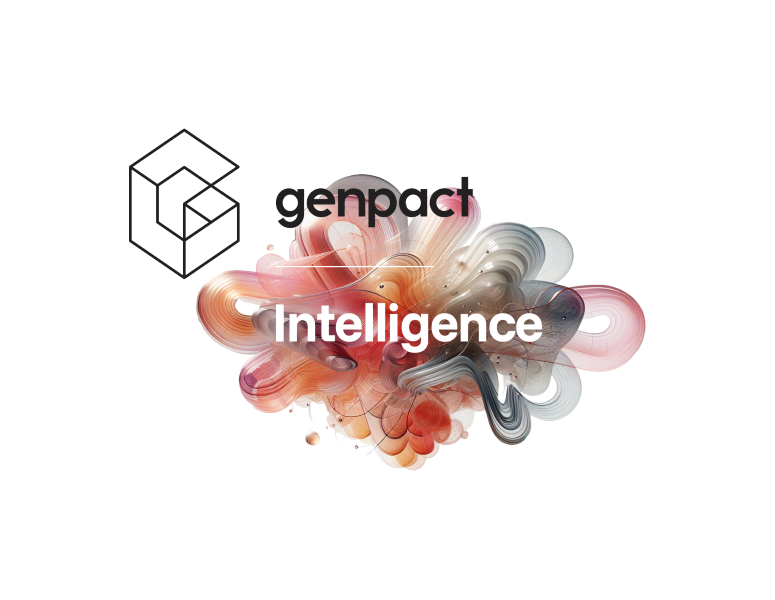Meet the industry-leading companies we partner with to scale the impact we generate for clients.
The supply chain is messy – and it's only going to get messier.
Between geopolitical tensions, rising costs, and unpredictable market dynamics, the global supply chain landscape is facing unprecedented challenges. Tariff policies shift unpredictably, natural disasters disrupt entire regions, and cyberattacks threaten to bring operations to a halt. Amid all this uncertainty, supply chain leaders face an almost impossible task: stay agile, mitigate risks, and keep operations running without a blip 24-7.
The good news? Artificial intelligence (AI) could hold the key to navigating this tangled web of issues. AI can autonomously adapt, fine-tune strategies, and optimize supply chain management in real time.
Here, we'll walk you through three strategies for achieving supply chain resilience with AI:
Break down business silos
Transform supply chains for agility
Unlock proactive decision-making
By the end, you'll know what it takes to futureproof your operations and gain a competitive edge. But first, let's explore what you're up against.
The modern supply chain ecosystem
If supply chain leaders feel like they can never catch a break, it's not without reason.
Today's supply chains are a delicate balancing act. Hyperconnectivity drives efficiency and responsiveness, but it also creates fragility. A regulatory change or new tariffs on key materials can ripple across the globe, causing delays, cost spikes, and the need for rapid recalibration.
Meanwhile, disruptions like cyberattacks and extreme weather grow more frequent. For instance, natural disasters in the US causing over $1 billion in damages have surged from 3.3 per year in the 1980s to over 17 per year between 2014 and 2023, according to USAFacts.
And those are just the visible disruptions. Business leaders also contend with shifting consumer expectations, demand volatility, labor shortages, and an ever-faster pace of change. To build supply chain agility and keep pace with change, organizations must rethink how teams, systems, and data work together.
1. Break down business silos
Unblock the flow of information
Supply chains don't exist in isolation. Think of finance departments, marketing, and operations – all seamlessly connected through a centralized, consistent, and reliable repository of data that lets every team work with the same accurate, up-to-date insights.
This integration enables organizations to move with greater agility and make decisions grounded in facts, enriched by experience, and free from reactive guesswork.
That's why, for resilience to take root, businesses must break down internal silos.
To put this into practice, leading organizations harness business data, integrate technology infrastructure, and embed AI to drive fast, cross-functional decision-making. Here are a few examples of how this can come to life:
Unified platforms: AI tools consolidate data across departments so everyone works from the same playbook
Enhanced collaboration: Teams can align priorities through AI-powered insights, helping everyone work toward the same goals
Real-time communication: AI removes delays, enabling instant feedback loops between teams like procurement, logistics, and finance
The result? Synchronized and efficient supply chain operations where teams allocate resources more effectively and mitigate risks across the company. Now, let's explore how organizations can disrupt traditional supply chain models and create new, stronger systems.
2. Transform supply chains for agility
Disrupting the old. Shaping the new
Building a resilient supply chain requires agility and flexibility in every layer of operations.
Here's how AI can strengthen your supply chain management capabilities:
Adaptability: Analyze data in real time, stress-test scenarios, and spot risks and opportunities to drive agile pivots
Efficiency: Automate processes, optimize resources, and remove redundancies
Transparency: Gain visibility into potential issues, allowing you to act quickly before they escalate
Collaboration: Streamline data sharing and communication, keeping teams and partners aligned
Responsiveness: Access predictive insights to anticipate demand and supply shifts, enabling quick adjustments with alternative suppliers, routes, and options
Cost-effectiveness: Forecast trends, eliminate inefficiencies, and refine pricing strategies
Only when you integrate AI as the backbone of your supply chain operations will you build the agility and speed you need to withstand disruption.
case study
AI-powered planning in consumer goods
A leading Japanese consumer goods company, managing over 40 brands and 600 products, struggled to maintain its network of one million vending machines, which accounted for 50% of its sales. Reliance on manual processes, tribal knowledge, and outdated systems created inefficiencies, raised costs, and limited the company's ability to scale.
Genpact, in collaboration with ketteQ, implemented an AI-powered planning solution to analyze inventory levels, forecast needs, and guide onsite agents to service revenue-producing assets. This innovation modernized field service operations, streamlining processes and redefining the business model as a profit center with $100 million in projected savings.
3. Unlock proactive decision-making
AI as the game-changer
Resilience alone isn't enough. Business leaders need tools to strategically adapt and make informed decisions as conditions change.
This is where generative AI and agentic AI in supply chains step in to lead the charge.
Generative AI's role: Excelling at gathering insights, simulating scenarios based on vast datasets, and collecting data for rapid decision-making. In the supply chain context, it can:
Enhance demand forecasting by generating synthetic data to model potential risk scenarios
Simulate potential disruptions and suggest innovative solutions
Summarize detailed reports or communication materials for stakeholders
Agentic AI's role: Agentic AI, on the other hand, focuses on autonomous decision-making and contextual adaptation. It can:
Dynamically adjust supply chain operations
Make decisions based on evolving conditions, such as rerouting logistics or reallocating resources
The synergy: Together, generative AI and agentic AI can create a powerful feedback loop.
Consider an AI solution that analyzes supplier locations by region and the potential effects of a new tariff. In this case, gen AI gathers insights from this data, while agentic AI autonomously adjusts sourcing strategies for supply chain risk mitigation.
The combination of generative AI and agentic AI in the supply chain is the sweet spot for moving beyond reactive strategies to proactive and even predictive approaches.
While gen AI provides valuable what if? scenarios, it's human expertise that guides the interpretation and application of these insights. Meanwhile, agentic AI handles the what next? actions, augmenting human decision-making with precision and speed.
case study
A new approach to spare parts inventory
A leading transportation and logistics company needed 100% vehicle uptime for its fleet of nearly 450,000 trucks. Managing spare parts inventory across 150 locations was a significant challenge.
But we had a solution: AI. The company used data on fleet age, vendor capabilities, and location capacity to revamp how it manages spare parts inventory. This led to a 15% improvement in forecast accuracy, a 10% reduction in inventory levels, and enhanced insights into supplier performance. Not only did shortage management improve, but so did customer satisfaction.
From chaos to clarity
Supply chains will always face disruptions. But with the integration of AI, enterprise leaders have a once-in-a-generation opportunity to build smarter, more resilient supply chain operations capable of withstanding any storm.
By embedding AI-powered capabilities, building up resilience, and overcoming business silos, you're transforming your supply chain ecosystem into a competitive powerhouse. Are you ready for the challenge?




